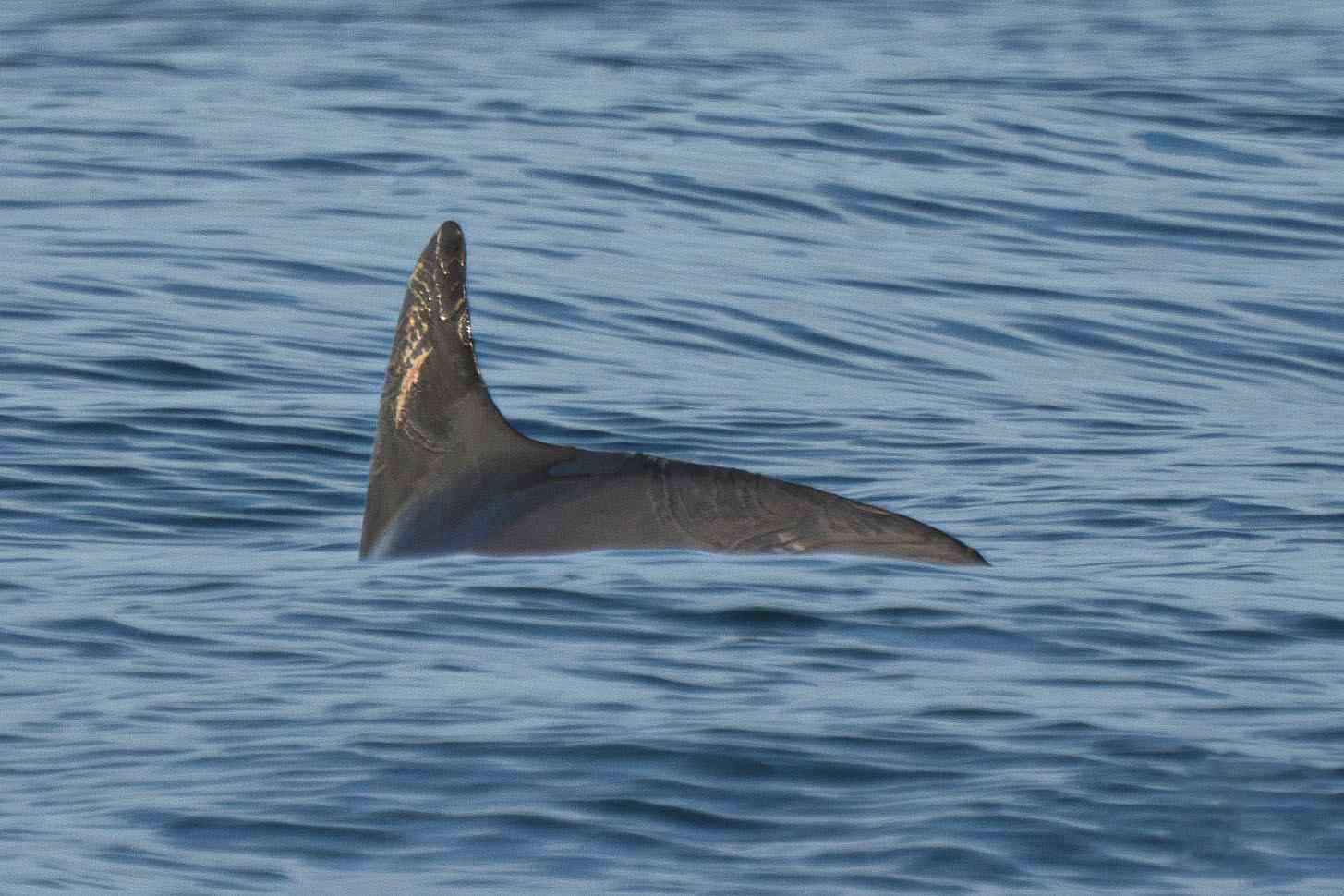Against the Odds, World’s Most Endangered Porpoise Resists Extinction in Mexico’s Gulf of California

In this photo courtesy of the Sea Shepherd Conservation Society, a vaquita marina swims in the Biosphere Reserve of the Upper Gulf of California and Colorado River Delta, in the Sea of Cortez, Mexico, May 20, 2023.
11:22 JST, June 8, 2023
MEXICO CITY (AP) — Against all odds, the remaining handful of Mexico’s endangered vaquita porpoises are holding on in their only habitat in the Gulf of California, according to a new research expedition report released Wednesday.
Experts on the expedition estimate they saw from 10 to 13 of the tiny, shy, elusive porpoises during nearly two weeks of sailing in the gulf last month.
That is a similar number to those seen in the last such expedition in 2021. Because they are so small and elusive, many of the sightings through powerful binoculars are categorized as probable or likely. The animals also emit “clicks” that can be heard through acoustic monitoring devices.
Experts from Mexico, the conservation group Sea Shepherd and the U.S. National Oceanic and Atmospheric Administration said they sighted at least one and probably two calves, as immature vaquitas are known, raising hopes for the survival of the world’s most endangered marine mammal.
They said there may be more vaquitas out there, since the voyage covered only part of the creature’s habitat in the gulf, also known as the Sea of Cortez. It lives nowhere else, and the species cannot be captured, held or bred in captivity.
But it is far too soon to celebrate. Illegal gillnets have trapped and killed vaquitas for decades; the population has declined from nearly 600 vaquitas in 1997.
Fishermen set the nets to catch totoaba, a fish whose swim bladder is considered a delicacy in China and can fetch thousands of dollars per pound (kilogram).
While the Mexican government has made some efforts to stop the net fishing — like sinking concrete blocks with hooks to snag nets — the fishermen still appear to have the upper hand, entering the protected are to fish on a daily basis and even sabotaging monitoring efforts.
According to the report, “fishermen have begun removing the acoustic devices (CPODs) used to record vaquita clicks. The data recorded on each device is lost, and it is expensive to replace the stolen CPODs.”
“Unless enforcement of the fishing ban is effective and the theft of equipment is stopped, acoustic monitoring cannot collect data as it has in the past,” the report stated.
Researcher Barbara Taylor called on Mexico to sink more concrete blocks to snag nets, because some of the vaquitas were seen outside the protected area.
The expedition took place May 10-26, and crisscrossed a corner of the gulf where the few remaining vaquitas had last been seen.
Alex Olivera, the Mexico representative for the Center for Biological Diversity, said “this is encouraging news and it shows that vaquita are survivors. But we still need urgent conservation efforts to save these tiny porpoises from extinction.”
Olivera, who was not part of the expedition, estimated that “even in a gillnet-free habitat, it will take about 50 years for the population to return to where it was 15 years ago,” adding “we need Mexico to urgently comply with existing regulations to prevent the vaquita from disappearing forever.”
President Andrés Manuel López Obrador’s administration has largely declined to spend money to compensate fishermen for staying out of the vaquita refuge and stop using gillnets, or monitor their presence or the areas they launch from.
Sea Shepherd has been working in the Gulf alongside the Mexican Navy to discourage illegal fishing in the area known as the ‘zero tolerance’ zone, and no fishing is supposedly allowed there. However, illegal fishing boats are regularly seen there, and so Mexico has been unable to completely stop them.
Pritam Singh, Sea Shepherd’s chairman, said that patrols with the Mexican Navy has reduced the number of hours that fishing boats spend in the restricted zone by 79% in 2022, compared to the previous year.
The last vaquita sighting expedition in 2021 yielded probable sightings of 5 to 13 vaquitas, a decline from the previous survey in 2019.
Illegal fishing itself has impeded population calculations in the past.
According to a report by experts published in 2022, both the 2019 and 2021 surveys “were hindered by the presence of many illegal fishing boats with gillnets in the water. Some areas could not be surveyed at all on some days due to the density of illegal fishing.”
The government’s protection efforts have been uneven, at best, and also often face violent opposition from local fishermen.
"News Services" POPULAR ARTICLE
-

American Playwright Jeremy O. Harris Arrested in Japan on Alleged Drug Smuggling
-

Japan’s Nikkei Stock Average as JGB Yields, Yen Rise on Rate-Hike Bets
-

Japan’s Nikkei Stock Average Licks Wounds after Selloff Sparked by BOJ Hike Bets (UPDATE 1)
-

Japan’s Nikkei Stock Average Buoyed by Stable Yen; SoftBank’s Slide Caps Gains (UPDATE 1)
-

Japanese Bond Yields Zoom, Stocks Slide as Rate Hike Looms
JN ACCESS RANKING
-

Keidanren Chairman Yoshinobu Tsutsui Visits Kashiwazaki-Kariwa Nuclear Power Plant; Inspects New Emergency Safety System
-

Tokyo Economic Security Forum to Hold Inaugural Meeting Amid Tense Global Environment
-

Imports of Rare Earths from China Facing Delays, May Be Caused by Deterioration of Japan-China Relations
-

University of Tokyo Professor Discusses Japanese Economic Security in Interview Ahead of Forum
-

Japan Pulls out of Vietnam Nuclear Project, Complicating Hanoi’s Power Plans
























